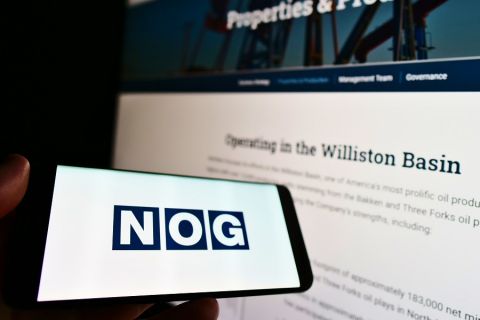China has restarted talks with U.S. LNG marketers to buy more LNG, several industry executives told Reuters, but they are worried that any purchases may come too late to keep natural gas prices from falling further due to a glut of global supply.
China pledged this month to buy an additional $18.5 billion in U.S. energy products this year, but the U.S.-China trade agreement left tariffs in place, including a 25% levy on LNG imports that puts U.S. LNG at a disadvantage, producers said.
"The U.S. doesn't have a margin that would allow any country to charge 25%" above global prices, said Michael Smith, CEO of Freeport LNG, referring to the tariff. Until that tax is removed, "it's a non-starter," he said.
Exports of LNG are the fastest-growing source of U.S. gas consumption, more than doubling since 2017 largely on Asian demand. Prices have tumbled due to rising global supply, and the glut is expected to grow. This situation will pressure LNG producers to cut output, and adding to hurdles for developers looking to finance multibillion-dollar projects.
The phase one accord between the United States and China has a two-year term, making it harder for buyers and sellers to enter long-term agreements, executives said. Phase 1 should be viewed as a "ceasefire" as opposed to an accord, said Jason Feer, head of business intelligence at LNG shipbroker and consultancy Poten & Partners.
LNG buyers in China will avoid long-term U.S. deals as long as there is a chance that the Phase 1 accord lapses without a real end to the trade dispute, he said. They risk having to sell off U.S. purchases or absorb the hefty tariff if the current deal expires without a replacement.
Near-full LNG stocks recently sent fuel prices to a near-decade low: $3.43 per million Btu in Asia and $4 per million Btu in Europe. U.S. capacity has increased about 22 million tonnes per annum (MTPA) since the start of 2019, and another 17.2 MTPA is projected in 2020.
Chinese state oil firm Sinopec was near an agreement with top U.S. exporter Cheniere Energy Inc. when the trade dispute erupted. If Sinopec agrees to terms on a long-term purchase, it could signal new agreements are possible, Smith said. Cheniere and Sinopec are revisiting supply terms in the wake of the Phase 1 deal.
Cheniere declined to comment. Sinopec did not reply to requests for comment.
U.S. Growth Unbound
Dozens of new LNG processing units are planned for the U.S., with a capacity that would have exceeded 2018's worldwide consumption. Many of those projects are unlikely to be built, analysts say.
Currently operating U.S. plants are still boosting capacity. Freeport expects to have 1.5 MTPA in unreserved capacity this summer and up to 3 MTPA by fall, Smith said. It has marketers ready to sell the new supply.
Rival Kinder Morgan Inc. is starting seven additional processing units that would bring its capacity to 2.5 MTPA this year. It began first exports in December.
"We're cheering for every LNG project to go forward," said Langtry Meyer, co-founder of Texas LNG. His company has talked with Chinese state-owned enterprises, electric power producers and trading firms about supporting its proposed 4 MTPA project, he said.
Since the signing of the trade deal, "we have seen a flood of inquiries from Chinese companies coming in," said Meg Gentle, Tellurian Inc.'s CEO. "Some are from companies we have already engaged with previously and some are from companies we have not spoken to before."
However, David Lang, a partner at law firm King & Spalding LLC who represents U.S. LNG producers, described the resumption of talks broadly as in early stages.
"Working up a real discussion will take some time," he said.
Recommended Reading
CEO: Coterra ‘Deeply Curious’ on M&A Amid E&P Consolidation Wave
2024-02-26 - Coterra Energy has yet to get in on the large-scale M&A wave sweeping across the Lower 48—but CEO Tom Jorden said Coterra is keeping an eye on acquisition opportunities.
Northern Oil and Gas Ups Dividend 18%, Updates Hedging
2024-02-09 - Northern Oil and Gas, which recently closed acquisitions in the Utica Shale and Delaware Basin, announced a $0.40 per share dividend.
The One Where EOG’s Stock Tanked
2024-02-23 - A rare earnings miss pushed the wildcatter’s stock down as much as 6%, while larger and smaller peers’ share prices were mostly unchanged. One analyst asked if EOG is like Narcissus.
E&P Earnings Season Proves Up Stronger Efficiencies, Profits
2024-04-04 - The 2024 outlook for E&Ps largely surprises to the upside with conservative budgets and steady volumes.
Chesapeake Slashing Drilling Activity, Output Amid Low NatGas Prices
2024-02-20 - With natural gas markets still oversupplied and commodity prices low, gas producer Chesapeake Energy plans to start cutting rigs and frac crews in March.





